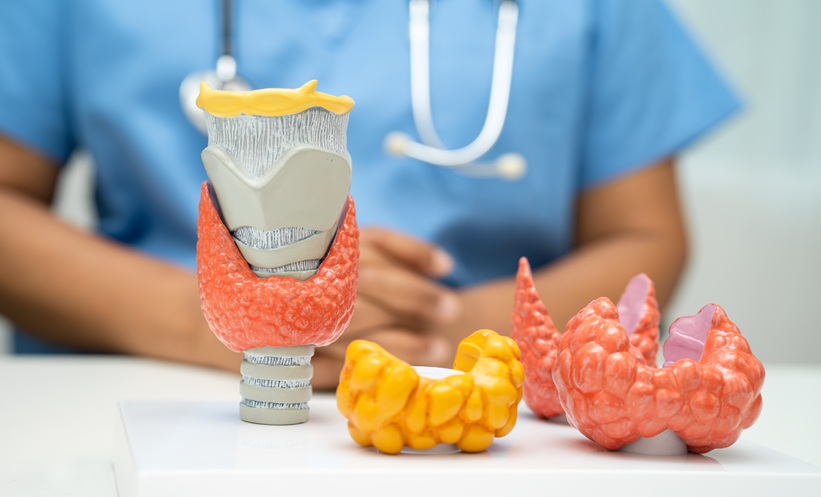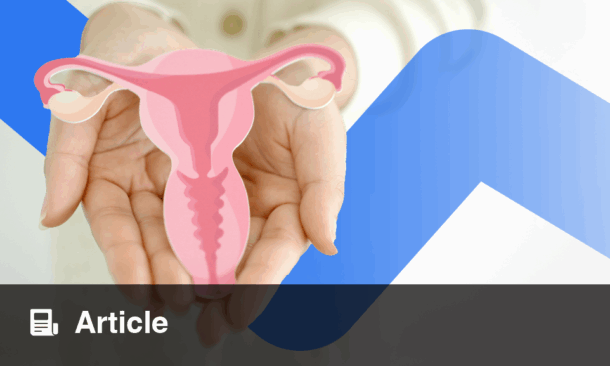Karen Canfell | Professor and Director of the Daffodil Centre, University of Sydney, A Joint Venture with Cancer Council NSW, Australia
Citation: EMJ Oncol. 2023; DOI/10.33590/emjoncol/10302304. https://doi.org/10.33590/emjoncol/10302304.
![]()
What initially attracted you to the specialism of population health and in particular population health in oncology?
My entry point was through a field that I now still spend a lot of time in, which is cervical cancer control, particularly cervical cancer prevention. I originally trained as an engineer, and I worked in biomedical technology many years ago. Through that route and via working in the medical technology space, I became very interested in the role of technology in health, as well as understanding the role of human papillomavirus (HPV) in cervical cancer, and what that meant in terms of technology development. I decided to do a PhD in epidemiology to build on that understanding, as I was very inspired by the events of that time in terms of the development of a prophylactic HPV vaccine. I was lucky enough to meet Ian Frazer at that time, who was one of the co-inventors of the vaccine and an leader in the field, and he was very supportive of my ideas and ambitions to contribute to the public health understanding of the role of vaccines. While I saw a public health challenge, I also saw a public health opportunity around the better integration of the new prophylactic vaccines with existing cervical screening programmes, and the potential to change and adapt screening programmes to be better optimised in relation to HPV vaccination.
You are the inaugural director of the Daffodil Centre, a flagship centre at the University of Sydney, Australia. Can you tell our readers a little about the aims of this organisation and the work you do as director?
The Daffodil Centre is a very exciting and relatively young research centre. The centre specialises in cancer control through aiding decision-making and integration of research insights into policy and practice. We try to reflect a wider vision about understanding and anticipating technology and other developments in terms of what they might mean for population health or health services. We further try to understand, anticipate, and help policymakers and others work through the implications in terms of what the combined effects of new interventions might look like, what the economic impacts might be, and what the best decisions might be in cancer control to take that forward in the interests of the population and of cancer patients. One of the aspects that is special about the Daffodil Centre is that it is a joint venture between the University of Sydney and Cancer Council, which is a not-for-profit civil society organisation – so we have an academic environment and expertise, rigour, and resources to draw upon as well as a strong connection to the community. The idea is that we bring together the best of all worlds in our endeavours to improve cancer control and improve outcomes for people in our own local setting, but also in Australia as a country, and globally, through our work supporting the World Health Organization (WHO) and other international stakeholders.
Your work was instrumental in transforming the National Cervical Screening Program (NCSP) in Australia from Papanicolaou (Pap) tests to HPV DNA testing. Please could you expand on why this change was necessary and the journey to achieving this?
Australia has been a very interesting environment in which to work in terms of cervical cancer control, because it really has been a leader in the space since the early 2000s. By then, we had an established national cervical screening programme based on Pap tests, as many other high-income countries had. This was a successful programme, as it had reduced rates of cervical cancer incidence and mortality by about half, but the impact had also plateaued. In the early 2000s, the programme had reached its maximum effectiveness with the Pap test, which relies on frequent testing. In Australia, we recommended 2-yearly Pap tests from the age of 18–69 years. This involves many tests in a lifetime, which posed many challenges in reaching every female or person with a cervix so frequently, particularly in rural and regional areas. In Aboriginal Australians and Torres Strait Islander groups, in culturally and linguistically diverse communities, in LGBTQ and intersex people, and in other groups such as those living with disability, the programme was not fully serving their needs, and so it was very difficult to reach the maximum potential of cervical screening. The introduction of prophylactic HPV vaccines was a large-scale disrupter, and Australia was one of the first countries to roll those out in 2006–2007. The combination of the HPV vaccine and the emergent evidence on HPV testing were really the key elements to this change. We needed to adapt the screening programme in the post-vaccination era to improve outcomes, which also opened up new possibilities for expanded access through, for example, the possibility of self-collection of the sample which can be done with HPV screening. For all those reasons, I think it was a very important transition. The journey was essentially around building the evidence to show that transition would be appropriate and safe, and lead to better outcomes for females. Australia was not quite the first, but it was one of the first countries to transition, and I think it has been an important aspect of why Australia has been well positioned to eliminate cervical cancer over the next decade or so.
In 2022 you co-authored a paper entitled, ‘Health impacts of COVID-19 disruptions to primary cervical screening by time since last screen: A model-based analysis for current and future disruptions’. Can you speak about the impact of the pandemic on cancer screening programmes and the effect this will have on future cancer incidence?
This work is one of the outputs of a major consortium, which is now called the International Partnership for Resilience in Cancer Systems (I-PARCS). This was a global group that formed in the immediate aftermath of the onset of the pandemic in early 2020. Our aim was to understand and quantify the effects of COVID-19 on cancer outcomes, and to work towards supporting evidence for best practice mitigation. In the cancer screening space, we have worked across screening modalities, particularly in cervical and colorectal cancer screening. We were able to bring together some of the leading modelling groups in those two spaces to do a comparative modelling analysis of the impact of disruptions and best practice mitigation. We were able to quantify the impact of the disruptions on cancer outcomes longer term and to show, in the context of both types of screening, what mitigation strategies should be prioritised.
Our main message was that catch-up screening is incredibly important. If it can be done, it actually mitigates much of the disruption impact going forward. In a sense that seems quite obvious, but we were able to quantify the impact and the effect of mitigation so that programme managers, and other stakeholders involved in screening programmes, could understand the importance of investing in mitigation.
I-PARCS has been an absolutely wonderful experience, because researchers, programme managers, and others around the world just volunteered their time for this. There was institutional involvement from the Daffodil Centre as well as the International Agency for Research on Cancer (IARC), and other important partners. However, one of our struggles has been finding data on what exactly did happen in health systems. Having timely access to information about the nature of the disruptions has been quite difficult, even in many high-income countries. One of the important insights was that the crisis exposes existing weaknesses in health systems, highlighting the need for timely access to integrated data from health systems.
Can you tell our readers a little more about the work your team has undertaken with WHO to develop clinical management guidelines for cervical screening in low-income countries?
The original work we did with WHO was in 2018–2019, and was to support the strategic plan for cervical cancer elimination. A consortium was formed, called the Cervical Cancer Elimination Modelling Consortium, and we were one of three groups that supported WHO. We were modelling the impact of scaling up across the three pillars of elimination across low- and middle-income countries. The three pillars are 90% vaccination coverage; 70% access to screening, with HPV testing; and 90% access to precancer and cervical cancer treatments. This work supported the estimates for how many lives could be saved by implementation of those goals and targets by 2030, and helped to underpin the impact, cost effectiveness, and investment case for elimination, for low- and middle-income countries.
The next important step was to provide countries and stakeholders with more detailed guidelines for how to how to implement primary HPV-based screening. The WHO had previously put out recommendations for cervical screening in 2013–2014, but a great deal has changed in terms of the evidence. In the meantime, high-income countries like Australia and the Netherlands had implemented the transition to HPV screening for the evidence-based reasons around its greater effectiveness. The WHO conducted a major review of their cervical screening guidelines, which incorporated an updated review of the evidence on HPV screening and triaging approach for HPV-positive women Our team at the Daffodil Centre used this updated evidence to inform the modelling piece, which involved looking at the different screening available approaches, which are cytology or Pap test screening, and visual inspection with acetic acid, and comparing them to HPV screening, and how that would play out in terms of the benefits, harms, and cost effectiveness in a low-and-middle-income context. We did a very extensive piece of modelling to support these new global screening guidelines, both in the general population of females and females living with HIV. Countries can really look at what approaches to HPV screening and triaging might work nationally, or even sub-nationally, and how those models can be tailored. That has been a really important development. The WHO cervical screening guidelines are now moving into a living framework where the evidence is continually evaluated as we go forward.
As a public health researcher, what interests you looking forward and where can we expect to see your focus lie in the coming years?
For HPV, I think the main challenges are around effective implementation for one-dose HPV vaccination and for HPV screening approaches incorporating self-collection, and point-of-care options. Moving forward, we need to understand the longer term performance of HPV screening in an HPV-vaccinated population, and a major trial we are performing in Australia called Compass, which is due to report main outcomes in 2025-6, will be very informative in this space. To strengthen health systems in cancer control, there is a potential role for new technology, for example, effective therapeutic HPV vaccines, which could be very exciting and could complement prophylactic HPV vaccination and cervical screening and treatment. So, I think there are some wonderful prospects there. I am also very excited about, hopefully, playing a part in building the evidence in some of those spaces. More broadly, one of the biggest areas of interest that my team and I have is the potential in cancer prevention, screening, and early detection, because those are very effective levers for saving many lives. We need to make those types of programmes more effective, to tailor them more to individual-level risk, and to expand effective screening approaches to other cancer sites. There is a lot of talk about risk-based screening or tailored or personalised screening using new technologies. We aim to support building the evidence for better tailored approaches to screening, including breast and colorectal cancer screening. The challenges lie in new lung screening programmes and what is called multi-cancer early detection technologies, which are looking to screen for many cancers at once. We hope to assist decision-makers in understanding the relative benefits, harms and cost-effectiveness of promising new approaches.







